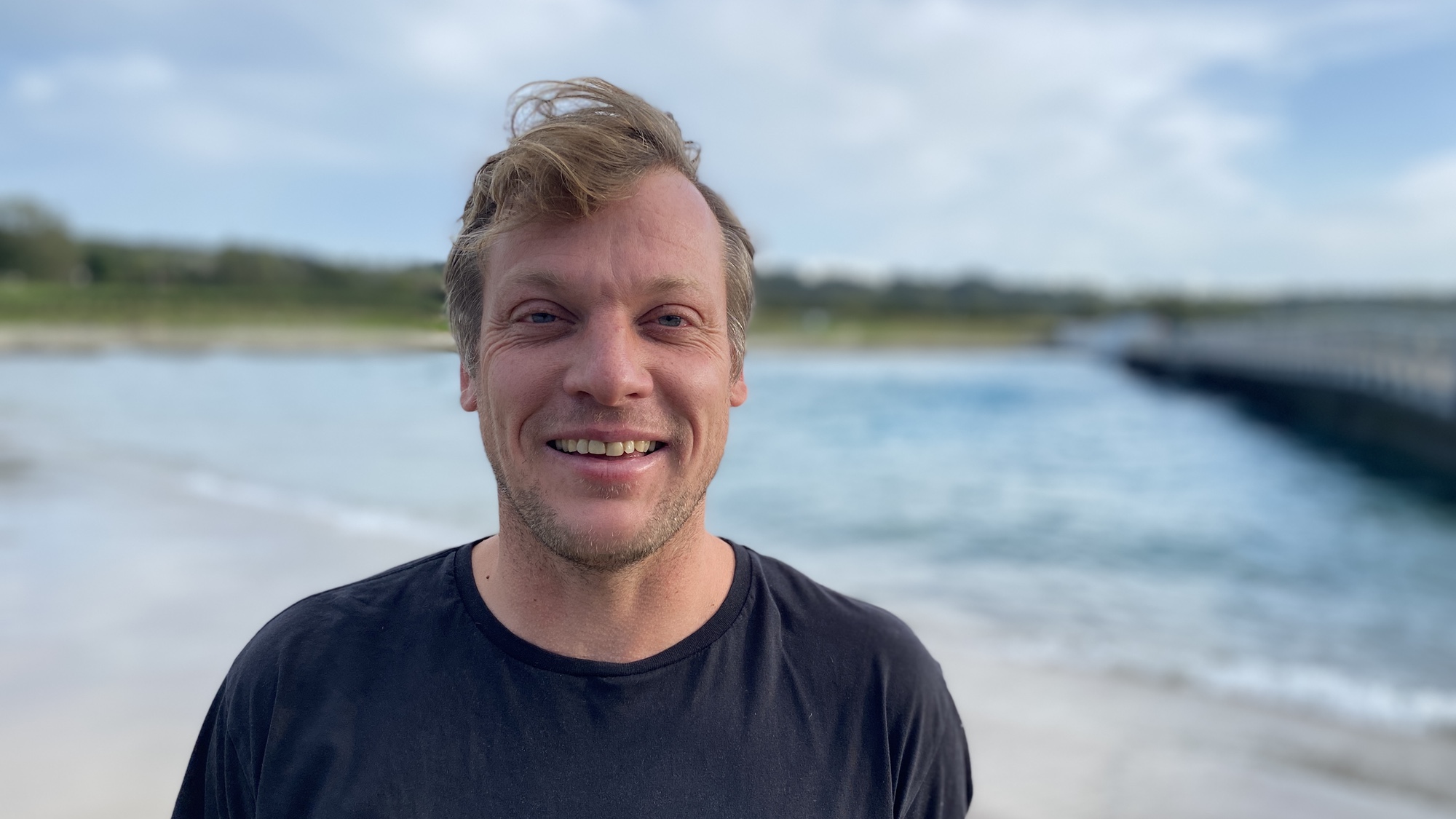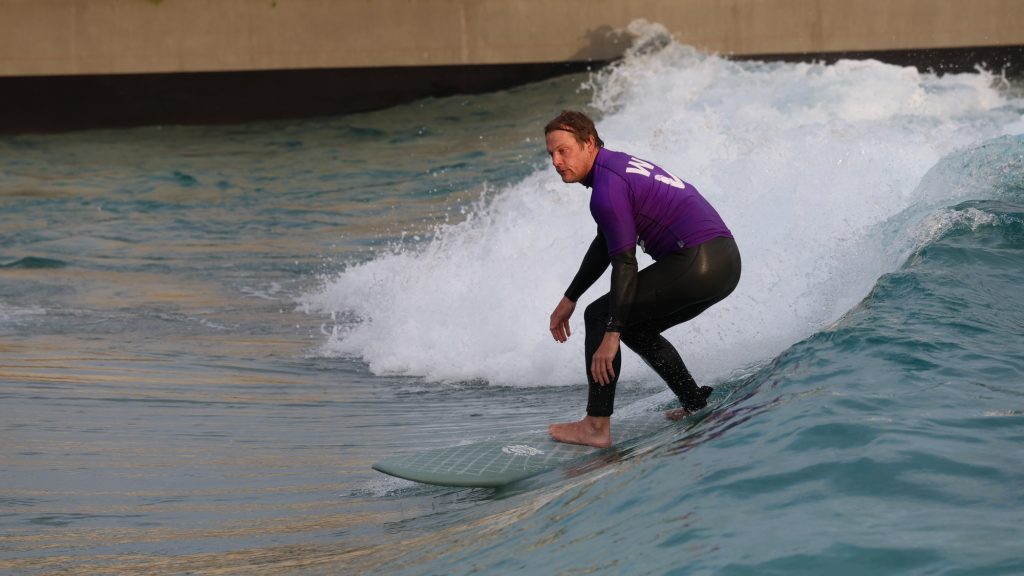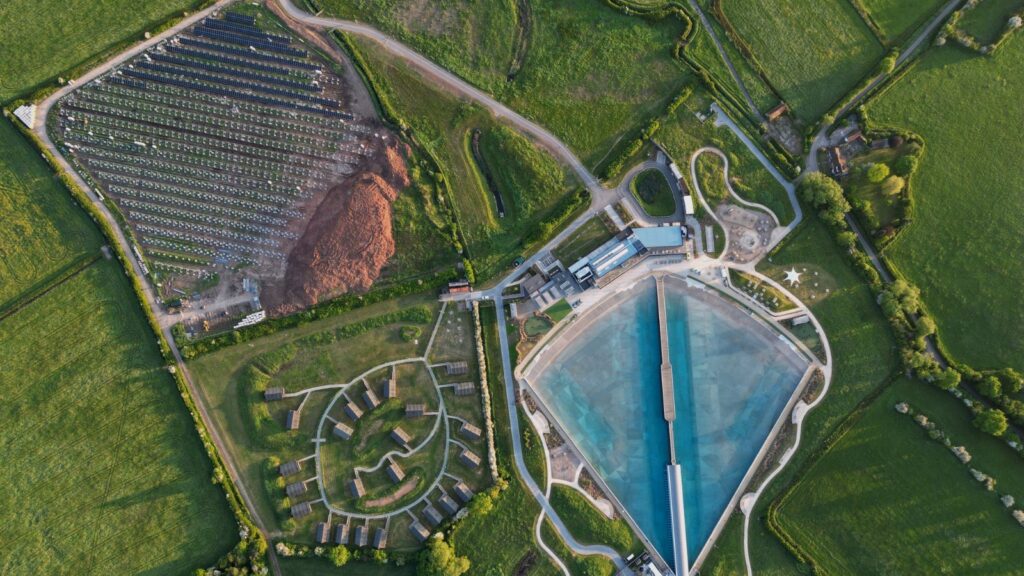Meet the other Nick who helped bring The Wave online

Nick Asheshov is one of the main reasons you’re able to go surfing in a sheep paddock in bucolic Bristol England. With a background in finance, he first delved into The Wave approximately seven years ago while exploring his own surf park project in London. Already equipped with potential investors, Asheshov’s path crossed with Nick Hounsfield. Impressed by The Wave’s advancements in securing land and planning permission, Asheshov reached out to collaborate. The two discovered that they had a shared vision, and soon after combined their efforts to bring The Wave to life.
Asheshov is a rare gem in the wave pool space as he’s one of the few to see a project materialize from daydreams and sketches. During WavePoolMag’s visit to The Wave we took the opportunity to speak with Asheshov on two key elements: Investment and solar energy production. The growing demand for sustainable surf venues means that Asheshov is, as usual, way ahead of the curve.
How do you convince someone to invest in a wave pool?
The fundamentals for a surf park are really interesting. There’s a limited supply of waves in the ocean in the UK, with surfable waves only about 30% of the time and high-quality waves less than 10% of the time. When the waves are good, it’s often crowded. Despite this limited supply, surfing is one of the fastest-growing sports. By placing a wave pool in a densely populated area, we believed the fundamentals were strong enough to attract investment for a project like this.
You obviously had to approach a lot of investors. What were some of the responses?
It was almost always rejections, with most people expressing interest in the concept and agreeing that the fundamentals seemed strong. However, the main concern was the technology risk and uncertainty about whether people would pay for surfing. While there was evidence of interest in surfing inland, the primary hurdle for potential investors was the uncertainty surrounding the technology and its reliability. Questions about whether it would work, how long it would last before needing maintenance or replacement, proved challenging for many to overcome during that early era.

Do you have a ratio for the rejections?
It’s almost all in the 90s, around 99%.
And then, who saw the vision and value in the project, taking the chance to invest?
It was individuals who understood and grasped the concept, willing to take the risk. Investing in a risky venture involves diversifying risks, so investors had a diversified portfolio where they could afford for things to go wrong. This project was seen as a potentially exciting and intriguing investment within a broader fund that encompassed various opportunities.
Is it easier today to secure investors for a wave pool?
Definitely. The project is tangible now, with real numbers to show. Having concrete results makes it much easier to engage in conversations with potential investors. The dynamic of these discussions has completely shifted compared to before. And the response has changed from mere interest to genuine consideration for investment. Previously, the typical response was along the lines of “call us when you’re ready to build your second one.”
Throughout this journey, have you had your own personal moments of doubt?
Absolutely, it has been a challenging and transformative journey. There have been times of uncertainty and self-reflection, but ultimately, it has been a valuable learning experience for all involved.
Reflecting on this process, could you give us a couple of key takeaways?
It has been an incredible and exciting experience, albeit tough at times. The learning curve has been steep, providing insights into oneself and others. Despite facing challenges such as opening just before the onset of Covid-19 and navigating through subsequent global events like the conflict in Ukraine, the business has persevered with the support of initiatives like the Coronavirus Business Interruption Loan Scheme. This journey has highlighted the unpredictable nature of business and the constant need to adapt and overcome challenges.

On Going Solar at The Wave
So you have your solar panels installed and are powering waves with the sun. What is the target for achieving full carbon neutrality?
So it’s a good question. I don’t really like using carbon neutral or carbon positive or negative because it’s been used so much. It’s almost tainted to use because I think it’s sort of used when it shouldn’t be. And so, I guess it is an important part of it, though. There is a greenhouse gas saving from the array we have and it’s substantial.
Do you have a preferred term?
What I like to say about the solar scheme is that we’re now a net exporter of power. So we generate and export more than we consume. Basically we export more than we import. So I think that’s just a sort of factual thing.
So the first “net exporter surf park” or “energy exporting surf park.”
I don’t know if there are any others. I know the phrase might not sound that great, but I like “the first surf park to generate more power than it consumes.”
How does the solar technology work in the wave pool?
The solar array generates about three-gigawatts (3,000,000kWh) per year. Of that 3 millionkWh, our demand is 1.8 million kilowatt hours. So, of that will be matching about 1.1, 1.2 million which is the surplus energy being exported back into the grid. The use of innovative technologies like flow batteries and larger solar panels has optimized energy production and efficiency, leading to significant savings and environmental benefits for the project.
How did the funding and financing work to get this all done?
It’s a really tough process to go through, but we’re also really lucky to be able to raise a grant. So this is partly grant funded, the European Regional Development Fund or ERDF, that we secured before the cut off date. It was very onerous bureaucratic process to go through, as you can imagine. Getting any grant from the ERDF is, so but it’s well worth it. We applied for the grant in September 2019. And then, we weren’t expecting to get anywhere with it, but we were selected to go through what’s called the full application. And then we submitted that. And it was a bit of a roller coaster because we were maybe not going to get the grant in the end, but then we ended up managing to secure it. We eventually signed the grant funding agreement on December 21st. And at the same time secured a loan from the local council, South Gloucestershire Council, for what’s called the match funding. So one of the conditions of the grant was that we raise match funding against it of an equivalent amount.
Then the land and the grid connection was the next hurdle. So the land here was just surprisingly difficult. It’s a sort of one of the complicated things about the site. We have two landowners, two ultimate landowners. So there was a negotiation with both of them, to be able to build the solution. And it was a complex deal to get over the line. And it sounds sort of fairly straightforward, but it actually took so long to just, I don’t know, just to finalize the legal paperwork around it.
What are the other effects of going to solar?
Material savings of course and from that point of view, it’s really great. It’s also important for investors to sign off and all of that, but it’s also obviously the right thing to do from an environmental point of view. It’s also just generated quite a lot of interest from the general public and other businesses. We’ve had other businesses approach us and ask us similar questions about how we went about it. So we’re potentially looking at other renewable projects now on the back of this, certainly for future sites, but also for third-party businesses as well. So, it generates a lot of interest from people coming to the wave or hearing about it. It’s also good from a marketing and PR point of view. And, yeah, it’s definietely a good story.
What advice would you give to others wanting to solar power their surf parks?
Just to start the process as early as you possibly can because it takes a very long time.
Related Coverage
